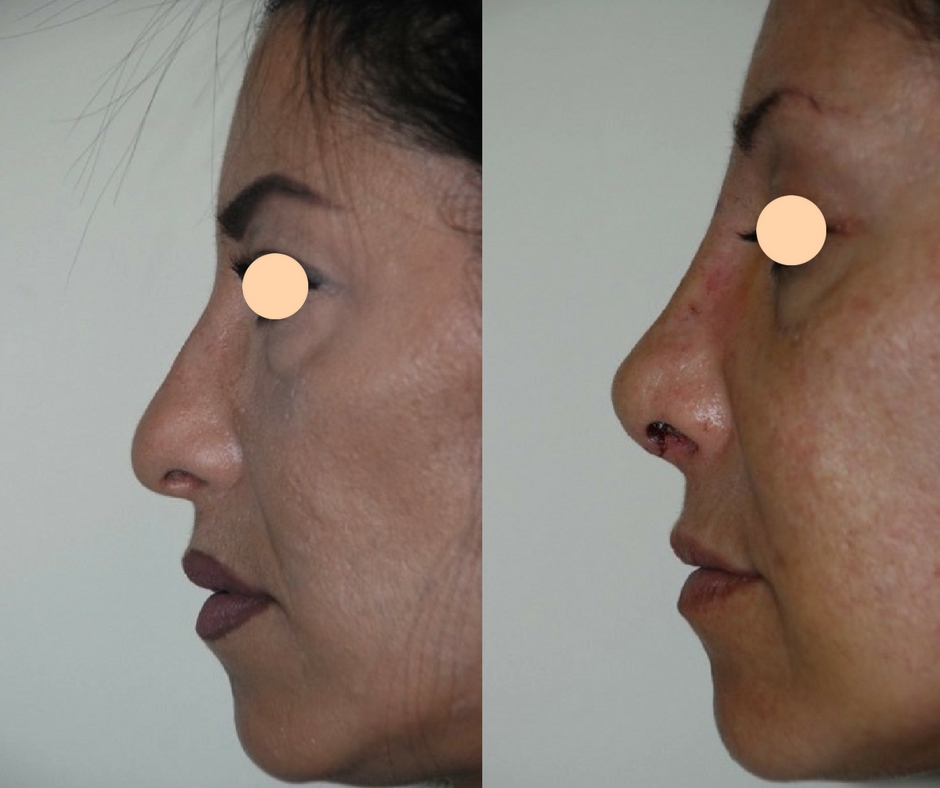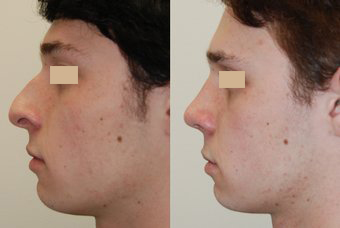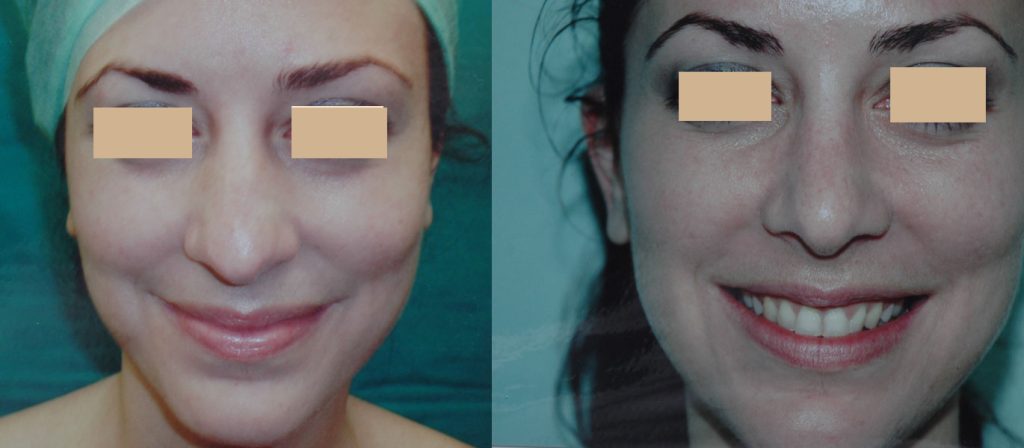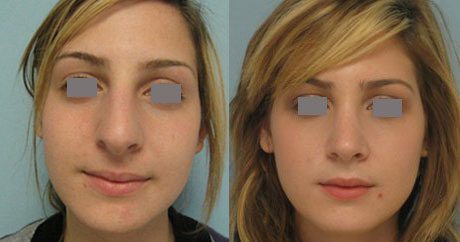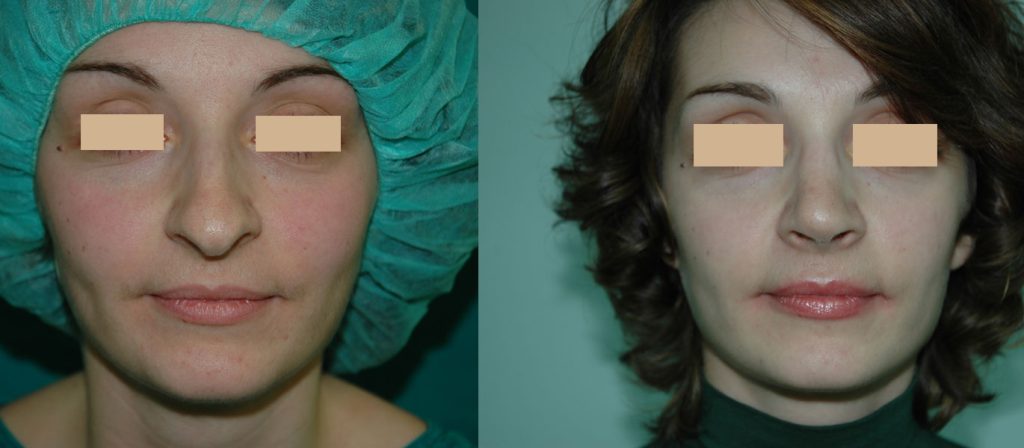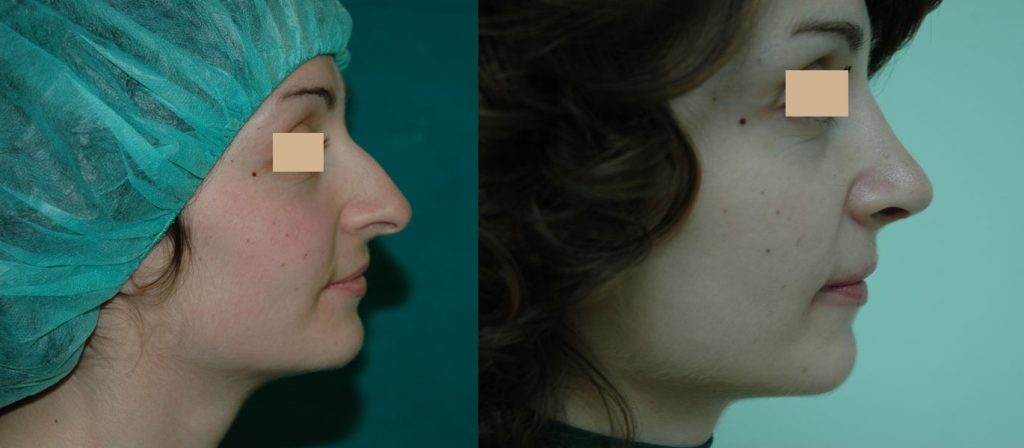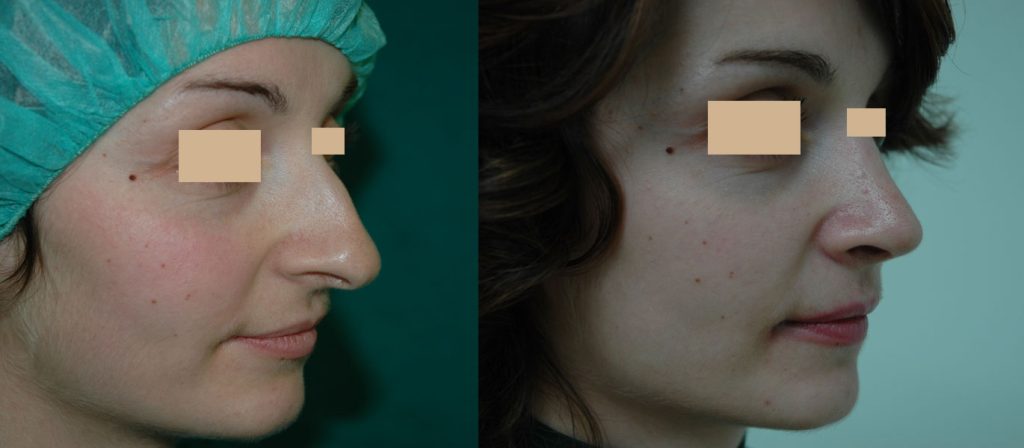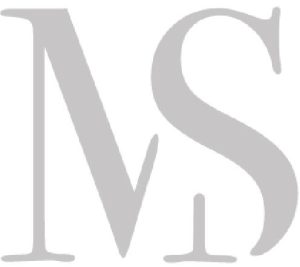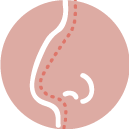
Rhinoplasty is one of the most popular plastic surgery procedures, which both men and women resort to. It is considered successful when it corrects both the anatomical and the functional problem of the person undergoing it.
PROCEDURE
The most important thing in rhinoplasty is that the result harmonizes completely with the shape of the face, matches the rest of its features and aesthetic lines (dorsal aesthetic lines), looking as natural as possible and not “artificial”.
The aesthetic restoration of the nose, but also its functional restoration can be easily combined with each other in one operation. The knowledge and experience of the plastic surgeon is essential in order to achieve the best possible combination of aesthetic and functional result.
Diaphragm correction surgery, reduction of nasal passages, but also other surgeries that improve the function of the nose, can be easily combined with the reduction of the nasal skeleton (some pubic nose, large and drooping tip) or even its increase with the use of implants where necessary (augmentation rhinoplasty).
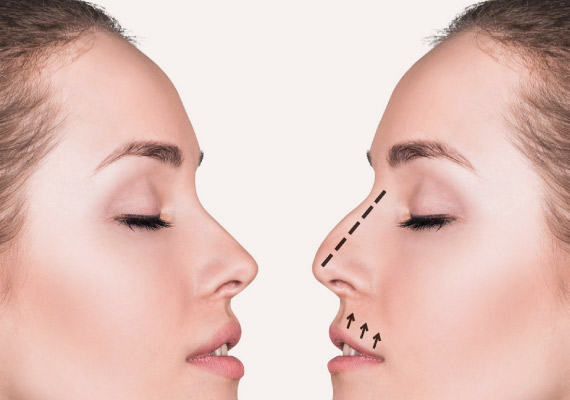
Patients who have undergone rhinoplasty in the past, elsewhere, in whom the desired aesthetic, or functional, or both results have not been achieved, are an object that we often face with the application of unique, advanced techniques that ensure the best possible result.
No nose is the same as the other, just as no person is the same as another. In this way, no rhinoplasty should be exactly the same as another. The results of the rhinoplasty, but also the technique used, must be different, on a case-by-case basis, so that what many people complain about does not occur, that after rhinoplasty all the noses look the same.
TECHNIQUE
In the doctor’s office, the doctor carefully examines the external skeleton and shape of the patient’s nose, but also with a special rhinoscope its internal structure, such as mucous membrane, diaphragm, and discusses in detail both the aesthetic and functional problems that may be encountered. The wishes of the individual should be listened to, but the final shape of the nose should be co-decided based on the proportional and anatomical elements of the face.
In this decision, the advanced 3D computer imaging Technology that the plastic Ms. Skolarikou has in her office helps significantly. This method simulates the final result after the rhinoplasty, with enough accuracy and only by taking a few photos in the doctor’s office!!
The operation of rhinoplasty has the peculiarity that it can concern both aesthetic and functional facial structures at the same time and requires complete knowledge and respect in the handling of the individual infrastructures it consists of (bone, cartilage, skin, mucous membrane). Before surgery, a basic pre-operative check-up, cardiological and anesthetic assessment is performed.
Rhinoplasty is usually performed under general anesthesia, while thanks to modern medicines and proper handling, it is painless, a fact that pleasantly surprises those who undergo it. The patient stays in the clinic for one night, while waking up with 1 tampon inside each nostril, which are removed after 2 days in the doctor’s office and a plaster cast (if osteotomies have been performed, which comes out in 1 week, in the doctor’s office).
SURGERY
After surgery, there are some bruises that subside in a few days and swelling that gradually subsides over the next few weeks. The return to work is possible after 7 days while exercise is recommended after 4-6 weeks. All incisions are internal and not visible!!
Only in open rhinoplasty there is a very small incision in the stylet which is not visible either while it heals perfectly!


